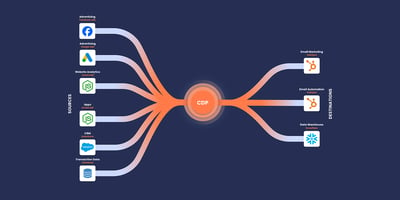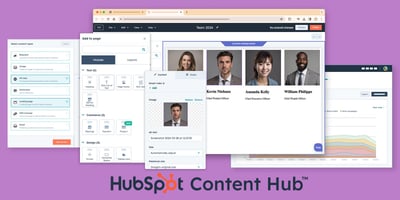Strong sales and marketing start with identifying the right audience. Your target audience generally falls into two buying groups - businesses (B2B) or consumers (B2C).
Business-to-consumer (B2C) vs Business-to-business (B2B) sales and marketing is very different. To effectively market to each group, you should be using specific strategies, methods, and approaches.
They can’t be interchanged, and not identifying this dichotomy upfront will severely limit your ability to acquire and grow customers.
This article will take you through the different options available to you and help you make informed decisions to drive successful campaign and sales strategies.
- What is B2B?
- The difference between B2B and B2C
- Why do B2B customers buy?
- B2B sales process
- B2B lead generation
What is B2B?
B2B (Business-to-business) sales and marketing refer to any marketing and sales activity geared towards a business.
If your business is selling a product or service to another business [and not directly to a consumer], you require B2B marketing and sales strategies.
The difference between B2C and B2B
B2C (Business-to-consumer) marketing refers to any marketing (strategy and content) geared towards a customer directly, where the end-user of the product or service is a member of the general public.
In comparison, B2B marketing and sales targets individuals based on their interests, behaviours and challenges when purchasing on behalf of a business.
B2C marketing targets consumers based on their interests, behaviours and challenges when purchasing for themselves.
Let’s break down the customers of each even further.
Why do B2B customers buy?
B2B customer’s goals are focused on ROI. As a result, B2B sales are often long term solutions. These purchases result in longer and stronger relationships with their customers, drive company revenue, and enable them to reach their business goals quickly and efficiently.
B2B customers are motivated to purchase by:
- Logic: When a solution is presented at the right time, meets its requirements and aligns with business goals.
- Financial incentive: Businesses exist to make money; therefore, by reducing the barrier of expense, they are more inclined to buy.
- Solution fit: The solution offered should be solving a specific problem they are aware of and need to solve.
The purchasing process for B2B customers often begins with education on your product or service.
They are often influencers researching a solution and have to confer with their managers and decision-makers before making a purchasing decision.
An effective process usually involves your account and sales managers as the points of contact for your customers.
By comparison, the goals of B2C customers are usually short term solutions and driven by emotion. They are interested in being entertained and finding the best deal available.
Consumers usually know what they want and don’t necessarily need to be educated to make a purchase.
B2B sales process
Business-to-business sales often have a higher monetary value and longer sales cycles. As a result, they are more strategic sells.
As such, B2B sales requires an effective and well-planned sales process. Do you have a sales process in place? Here’s how to set one up.
1. Understanding the market
Begin by conducting high-level market research to understand the demand for your product or service; and where you stand within that demand. From here, you can identify the niche or added value that separates you from your competitors, offering similar solutions.
2. Who are you selling to?
Identifying your ideal buyer persona. Knowing who you are selling to within the demand you identified will help you hyper-focus your efforts on the prospects most likely to convert and benefit from your product or service.
Locking in on your ideal buyer persona will help you identify the context around your prospects—for example, the current state of their business, their job function, position and purchasing habits.
Consider as well both influencers and decision-makers when you are identifying who needs to be targeted. For example, an IT director might make the final decision, but the IT manager will promote the solution.
3. Map out the buyer's journey
An effective B2B sales process knows where prospects are coming from and, most importantly, where they are going. Map out the steps a potential customer could take to purchase your product or service. What hurdles they may encounter and what concerns or questions they might have along the way. The typical stages a prospect goes through are:
- Awareness - The buyer is identifying the problem they are experiencing.
- Consideration - The buyer is determining how to solve the identified problem.
- Decision - The buyer is comparing the available solutions and deciding which route to take.
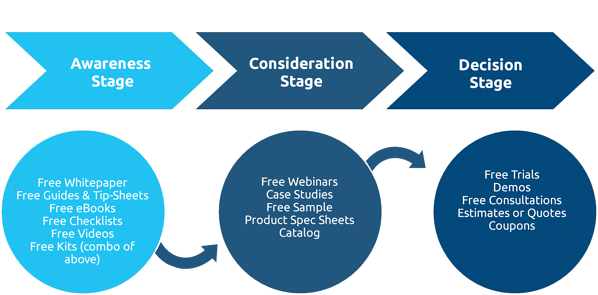
4. Qualify leads
Do you know when your leads are ready for a direct sales pitch? Are they in a position to buy? In this step, create the criteria and questions you need to ask to identify the leads that are ready and those that don’t fit your process and should be released.
It’s important to identify what product or service will best solve their problem. Next, identify who will be able to make the final purchasing decision. With this information, you will be able to advise and pitch your qualified prospect.
5. Meet face-to-face
Higher value B2B sales almost always require face to face meetings. Today these can be in person or via video conferencing.
Setting up a video or in-person meeting presentation gives you a chance to impress and sell on a personal level. People trust people before they trust a brand. In B2B sales, if you match a trusted salesperson with a trusted brand - you’ll win the business every time.
It’s during these face-to-face meetings that price can become less critical. Building trust and rapport can win you the deal, even if your solution is more expensive.
Tailor your presentation to meet the specific prospect's unique use case and pain points.
6. Transition and upsell
Once the deal is closed, the salesperson should oversee that customers receive what they've purchased.
In B2B sales, because the sales are larger and solution orientated, once the sale is done, the customer is handed over to the implementation team. It is critical that the salesperson help transition customers to their implementation team and customer/account managers.
So much information is shared during the sales process; it can be a deal-breaker on an upsell if the customer needs to reexplain everything again to the implementation team.
A smooth transition to the implementation and support teams is critical for upselling and future sales opportunities.
7. Track your results and improve
Analyze your current sales process; what’s working, where are prospects dropping off, how long was the sales cycle and how many touchpoints were required to close.
Address each of these to get a full understanding of your process and what needs to be updated and replicated.
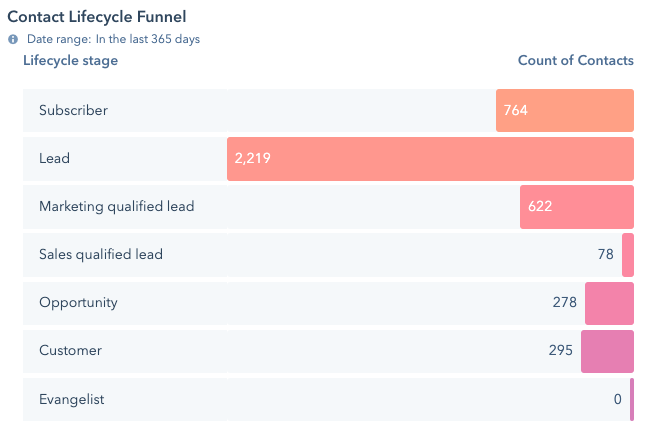
If you are using a CRM like HubSpot CRM or Salesforce CRM, you will be able to tell which deal stages are taking the longest and what types of leads close faster.
Analysis of this data will identify what’s working by identifying the prospect actions that tend to move them to the next stage. It will also identify prospect exit criteria for leads that dropped off your sales process.
B2B lead generation
Before we cover these essential B2B lead generation methodologies it is important to remember that in B2B sales, both the sales and marketing teams need to be on the same page. This is called sales and marketing alignment.
Marketing generates the leads, qualifies them, passes them on to sale. From here sales qualify, further works these high-quality leads and closes the business.
So how do you generate B2B leads?
1. Website
Often the first touchpoint the prospect will have with your business, your website serves as the hub for your content marketing and landing pages. Almost all buyers will visit a seller’s website before making a purchase.
Because of this, your website forms the basis for your B2B marketing strategy. It needs to be easy to use, understand and be entirely aligned to ‘how and what’ the sales team sells.
Go review the section above called - Why B2B customers buy.’ B2B customers are motivated to purchase by logic, financial incentive, and solution fit. Your website must identify and drive home these factors.
2. Social media marketing
With most of your prospects using at least one of the social media platforms, it’s become essential for businesses to have some sort of presence on these platforms.
This doesn’t mean that businesses should be on all of them, but the one(s) that make sense for your business and the one(s) your prospects are using.
Meeting your prospects where they spend most of their time increases the opportunity your prospects will find you. Remember, your job in the B2B sales process is to assist in their buying journey.
Unsurprisingly, our recommendation for B2B social media marketing is LinkedIn. Although your clients may spend time on Facebook as well, they’re more likely to click on the latest cat video than your compelling B2B offer.
3. SEO
A functional and engaging website will only get you so far. Your prospects will need to be able to find it.
The king of authority generation, a website that ranks top for a product or solution, drives brand trust. Remember what we said in the section on Face-to-face meetings: ‘In B2B sales, if you match a trusted salesperson with a trusted brand - you’ll win the business every time.’
Getting your website found on search engines like Google requires a little technicality and intent with the content on your website. This can range from great content and page load speeds to using specific keywords.
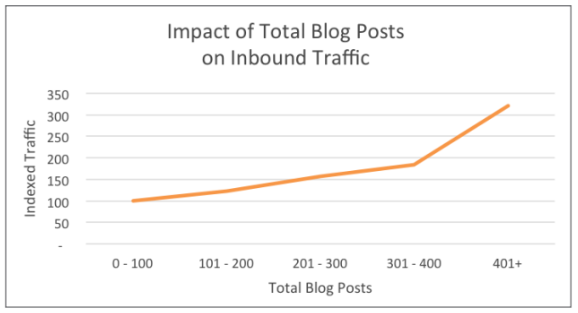
Don’t underestimate the power of your website; if it is filled with up-to-date, helpful and engaging content, your target audience will find it insightful and beneficial. They will come back regularly. They will reach out to you.
4. Paid advertising
Your SEO efforts sometimes need a little boost for your content to start being found. This can be achieved through paid advertising.
There are two reasons that paid advertising is critical to a solid B2B sales and marketing strategy:
Firstly, SEO takes time. So while you are building great B2B content and waiting for your organic search engine rankings to climb - utilise paid advertising to supplement your traffic.
Secondly, it takes multiple touchpoints to convert a lead into a sales meeting and, ultimately, a closed deal. Remarketing is one of the best ways to keep top of mind with the prospect and keep them coming back to your website to consume more content.
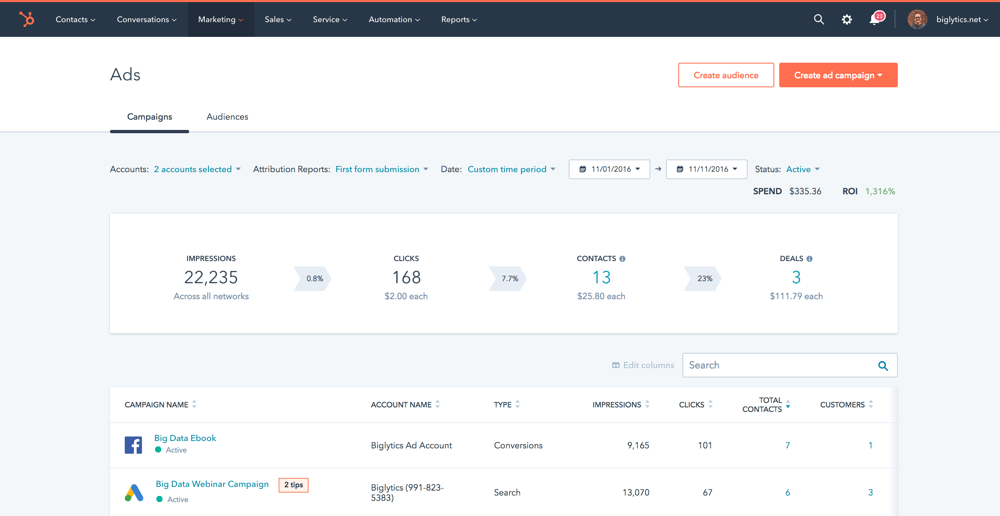
They might not leave an enquiry on the first few website visits, so reminding them to come back repeatedly and contextually is one of the most underutilized B2B lead generation strategies.
5. Content marketing & gated content
Traditional marketing tactics interrupt a prospect's day-to-day with promotional content. Content marketing aims to be found by anticipating what prospects are searching for. By providing relevant content, you are able to meet them where and when they want to.
Writing content that answers the questions your prospects are asking is the basis of excellent content marketing. Check out Marcus Sheridan’s, book called They Ask You Answer: A Revolutionary Approach to Inbound Sales, Content Marketing, and Today's Digital Consumer. It’s a great read and IMO the best book on modern content marketing.
Content marketing will form the backbone of your SEO strategy too.
Once you have attracted the attention of your potential customers, having gated content offers on your website will cause engaged readers to go deeper into your content and leave their details behind. This is the start of an automated marketing journey or a salesperson reach out.
6. Marketing Automation & CRM
Not everyone that reaches out to you is going to buy now. They might still be in the early stages of research and still need a good amount of information and nurturing.
While this can be done manually, and the best salespeople in the B2B sales game can keep track of every lead and nurture them manually with calls, email, meetings, etc. I recommend using a strong CRM solution to keep track of when and how to reach out.
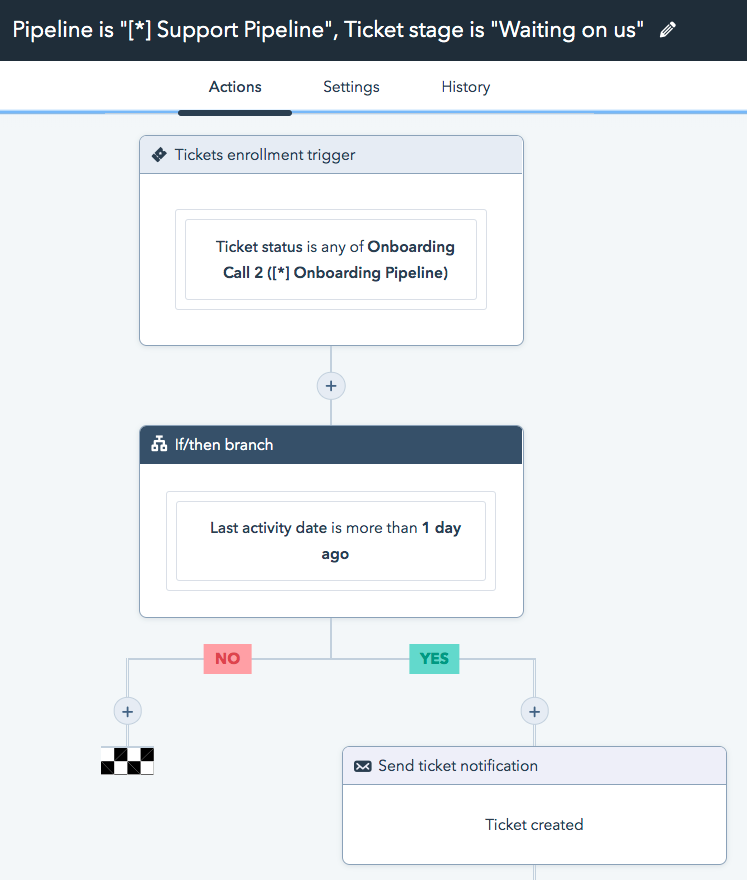
Better yet, use marketing automation to do the early-stage nurturing for you. Software like HubSpot does this excellently. It will keep track of the lead from prospect through to customer. It will even automate sales outreach and notify a salesperson when the prospect is ready to buy and needs a call.
Marketing automation systems like HubSpot work 24/7 to nurture prospects into a ‘ready to close’ state.
Final thoughts
I hope this article has outlined how to create an effective B2B sales process for you.
The pointers are high-level but highly relevant and if you dig deeper into each of them you will create a winning sales strategy.
If you would like to chat with us about how we can help you prioritise and implement these pointers, please don’t hesitate to contact MO Agency today for more information.
Alternatively, here is another article on improving your B2B customer engagement.



